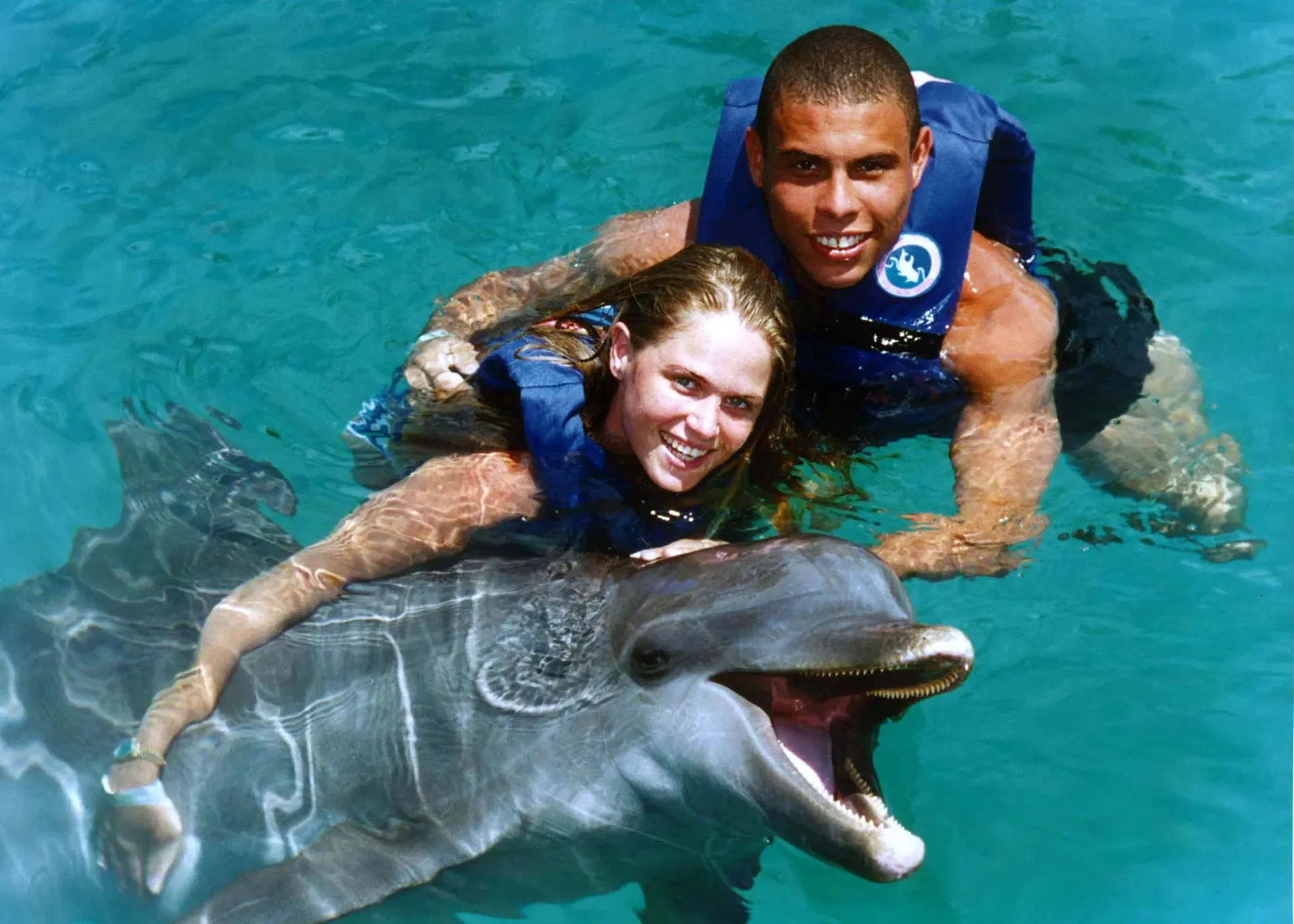Cancún, Mexico — As Mexico moves to ban dolphin shows, confusion reigns over what tourists can still do. Travelers arriving at Cancún International Airport continue to see bright, glossy advertisements urging them to “Swim with Dolphins — Book Today!” Yet recent legal reforms have left many visitors wondering whether the experience is still allowed. The short answer is both yes and no: the industry is operating in a legal gray zone, and 2025–2026 marks the beginning of the end for dolphin swims in Mexico.
The shift follows sweeping reforms approved in June 2025 to the General Wildlife Law, popularly referred to as the Ley Mincho. The amendments — passed unanimously by the Mexican Congress — prohibit the use of marine mammals such as dolphins, sea lions, and manatees for entertainment, shows, or therapy. They also ban captive breeding, effectively ending the replacement of animals once the current population ages out.
Despite the landmark decision, dolphin encounters remain open across Quintana Roo. Tours continue to run under existing permits while the federal government drafts the official enforcement regulations — a process that can legally take up to 365 days.
What the New Law Actually Says
Under the amended Wildlife Law, marine mammals may no longer be used for activities classified as entertainment. This includes traditional interactive experiences long marketed in Cancún and the Riviera Maya, such as foot pushes, dorsal tows, and staged photo poses.
The law also forbids the capture of wild animals and ends breeding programs, a measure that mirrors regulations adopted in Canada and parts of the United States. Mexico is the first Latin American country to adopt a nationwide prohibition of this scope.
The federal government now faces the task of writing the regulations, defining implementation timelines, and setting standards for animal welfare — a step that must be completed before the law becomes fully enforceable.
Why Dolphin Experiences Are Still Operating
Until the enforcement guidelines are published, marine parks may legally continue operating under their currently issued federal permits. According to SEMARNAT and PROFEPA (the environmental enforcement agency), facilities that comply with existing welfare rules cannot be shut down during this transition.
This explains why tourists arriving in Cancún still see active promotions — and why operators are quietly adjusting their programs ahead of the coming changes.
New Requirements: From Concrete Pools to Sea Pens
One of the key mandates of the reform is the gradual transition from concrete enclosures to “sea pens” — fenced sections of the natural ocean where animals experience tides, currents, and natural substrates.
This model is already used in Isla Mujeres and Puerto Aventuras, where dolphins live in ocean-water habitats rather than artificial pools. Under the new rules, these sea-pen systems are expected to become the only acceptable environment for remaining captive marine mammals.
Facilities based in shopping malls or inland hotels may have to relocate their animals once the regulatory outline is finalized.
Goodbye to “Physical Contact” Programs
The law explicitly targets what legislators called “circus-like practices.” This includes:
- Pushed-swimming (“foot push”)
- Dorsal fin towing
- Forced kisses or hugs
- Synchronized performances
Operators are already rewriting their programs into educational encounters, focusing on observation rather than physical handling. Once the regulations take effect, swimming with dolphins as travelers know it today will be eliminated entirely.
No, Dolphins Will Not Be Released to the Wild
A recurring misconception is that Mexico will release captive dolphins once the ban fully takes effect. Wildlife authorities and marine biologists have firmly rejected this idea.
Most dolphins held in Quintana Roo were born in captivity or have spent decades under human care. They do not know how to catch live fish, avoid predators, navigate currents, or migrate. Releasing them would almost certainly result in death.
The law therefore requires that these animals remain under human care for the rest of their natural lives — a span that can exceed 40 years.
A Tourism Industry Approaching Its Final Chapter
Tour operators emphasize that the activity remains legal for now, but acknowledge profound uncertainty ahead. Across Quintana Roo, the dolphin-swim industry represents hundreds of jobs and millions in annual revenue. Environmental organizations, meanwhile, argue that Mexico is finally aligning with global trends that discourage the display of captive cetaceans.
Once the regulations are finalized — likely in mid-2026 — Mexico will begin phasing out dolphin swims entirely. New educational models will replace physical interaction, and no new dolphins will ever enter the system.
For now, tourists still have the option to participate, but the experience is in a clear sunset phase.
Whether visitors choose to take part today or avoid it entirely, one thing is certain: Mexico’s long-running dolphin tourism industry is entering the final years of its existence. By 2026, the experience will look dramatically different — and soon after, it may disappear altogether.
Discover more from Riviera Maya News & Events
Subscribe to get the latest posts sent to your email.
